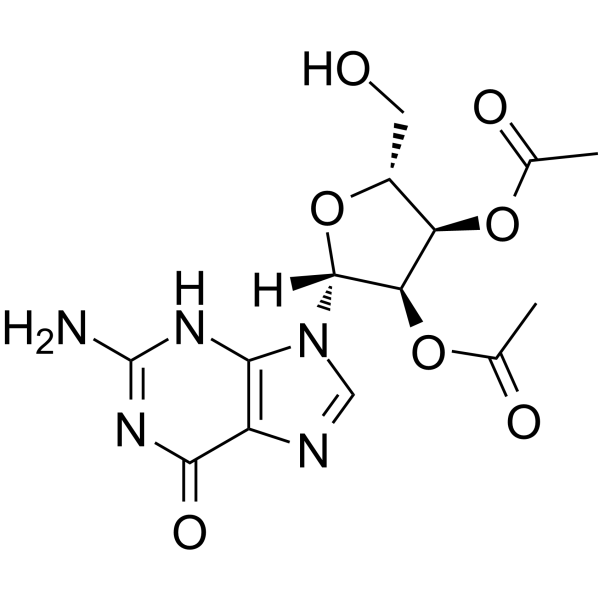Signaling Pathways
The antibody-drug conjugate (ADC), a humanized or human monoclonal antibody conjugated with highly cytotoxic small molecules (payloads) through chemical linkers, is a novel therapeutic format and has great potential to make a paradigm shift in cancer chemotherapy. The three components of the ADC together give rise to a powerful oncolytic agent capable of delivering normally intolerable cytotoxins directly to cancer cells, which then internalize and release the cell-destroying drugs. At present, two ADCs, Adcetris and Kadcyla, have received regulatory approval with >40 others in clinical development.
ADCs are administered intravenously in order to prevent the mAb from being destroyed by gastric acids and proteolytic enzymes. The mAb component of the ADC enables it to circulate in the bloodstream until it finds and binds to tumor-specific cell surface antigens present on target cancer cells. Linker chemistry is an important determinant of the safety, specificity, potency and activity of ADCs. Linkers are designed to be stable in the blood stream (to conform to the increased circulation time of mAbs) and labile at the cancer site to allow rapid release of the cytotoxic drug. First generation ADCs made use of early cytotoxins such as the anthracycline, doxorubicin or the anti-metabolite/antifolate agent, methotrexate. Current cytotoxins have far greater potency and can be divided into three main groups: auristatins, maytansines and calicheamicins.
The development of site-specific conjugation methodologies for constructing homogeneous ADCs is an especially promising path to improving ADC design, which will open the way for novel cancer therapeutics.
References:
[1] Tsuchikama K, et al. Protein Cell. 2016 Oct 14. DOI:10.1007/s13238-016-0323-0.
[2] Peters C, et al. Biosci Rep. 2015 Jun 12;35(4). pii: e00225. doi: 10.1042/BSR20150089.
Targets for Signaling Pathways
- Proteases(29)
- Apoptosis(824)
- Chromatin/Epigenetics(15)
- Metabolism(336)
- MAPK Signaling(26)
- Tyrosine Kinase(73)
- DNA Damage/DNA Repair(49)
- PI3K/Akt/mTOR Signaling(38)
- Microbiology & Virology(42)
- Cell Cycle/Checkpoint(168)
- Ubiquitination/ Proteasome(24)
- JAK/STAT Signaling(10)
- TGF-β / Smad Signaling(21)
- Angiogenesis(59)
- GPCR/G protein(3)
- Stem Cell(19)
- Membrane Transporter/Ion Channel(161)
- Cancer Biology(366)
- Endocrinology and Hormones(152)
- Neuroscience(367)
- Obesity, Appetite Control & Diabetes(17)
- Peptide Inhibitors and Substrate(2)
- Other Signal Transduction(156)
- Immunology/Inflammation(934)
- Cardiovascular(98)
- Vitamin D Related(0)
- Antibody-drug Conjugate/ADC Related(0)
- PROTAC(212)
- Ox Stress Reagents(24)
- Others(4010)
- Antiparasitics(6)
- Toxins(62)
Products for Signaling Pathways
- Cat.No. Product Name Information
-
GC61643
1-Hydroxy-2-butanone
1-Hydroxy-2-butanone is a natural compound isolated from Bomboo Juice with antitubercular activity.
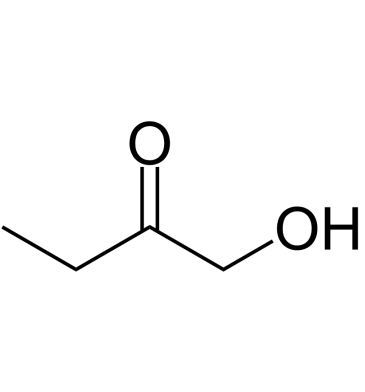
-
GC48909
1-Hydroxyanthraquinone
An anthraquinone with genotoxic and carcinogenic activities

-
GC25004
1-Iodoadamantane
1-Iodoadamantane (Adamantyl iodide) is a chemical.
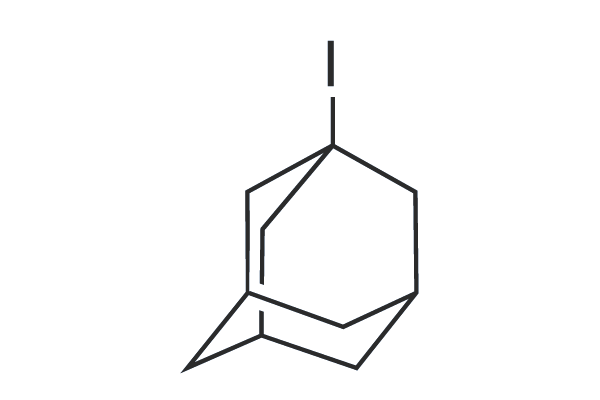
-
GC49495
1-Isothiocyanato-6-(methylsulfenyl)-hexane
An isothiocyanate with diverse biological activities

-
GC66557
1-Isothiocyanato-PEG3-azide
1-Isothiocyanato-PEG3-azide is a PEG-based PROTAC linker that can be used in the synthesis of PROTACs.
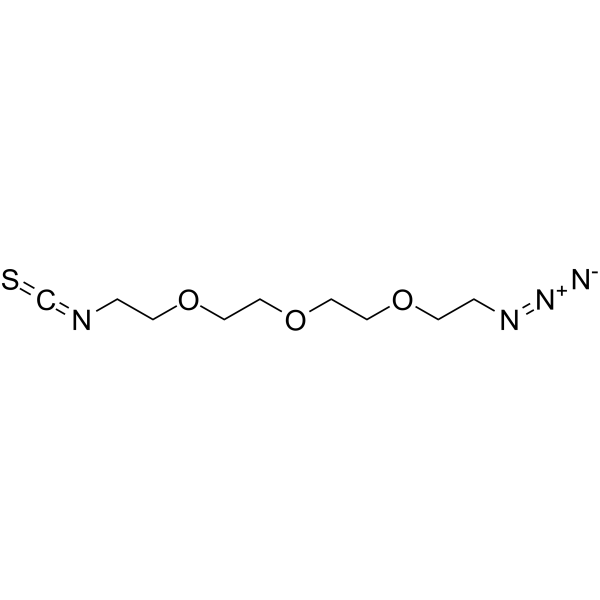
-
GC65697
1-Isothiocyanato-PEG4-alcohol
1-Isothiocyanato-PEG4-alcohol is a PEG-based PROTAC linker that can be used in the synthesis of PROTACs.
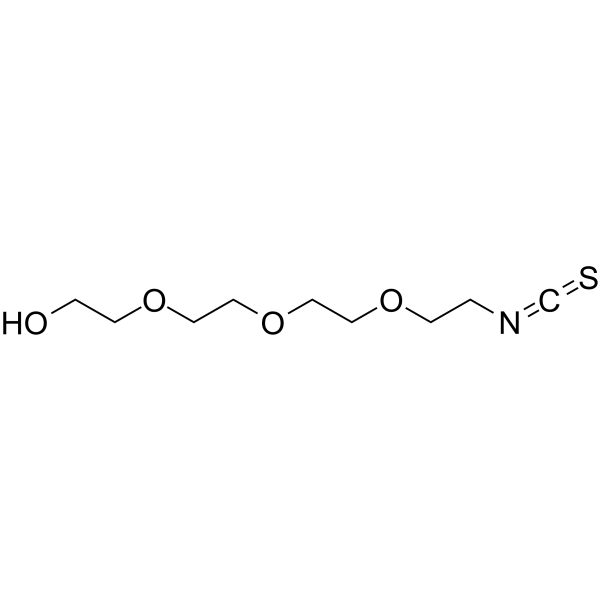
-
GC61715
1-Methoxynaphthalene
1-Methoxynaphthalene is used as the substrate to investigate the activity of cytochrome c peroxidase (CcP).
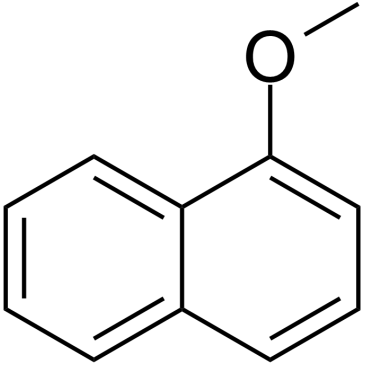
-
GC64598
1-Methyl-L-histidine-d3
1-Methyl-L-histidine-d3 is the deuterium labeled 1-Methyl-L-histidine.

-
GC61442
1-Methylguanidine hydrochloride
1-Methylguanidine hydrochloride is an endogenous metabolite.
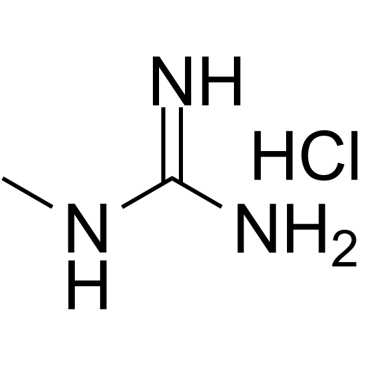
-
GC65038
1-Methylinosine
1-Methylinosine is a modified nucleotide found at position 37 in tRNA 3' to the anticodon of eukaryotic tRNA.

-
GC64156
1-N-Boc-3-hydroxyazetidine
1-N-Boc-3-hydroxyazetidine is a non-cleavable?ADC linker?used in the synthesis of antibody-drug conjugates (ADCs). 1-N-Boc-3-hydroxyazetidine is also a alkyl chain-based PROTAC linker?that can be used in the synthesis of PROTACs
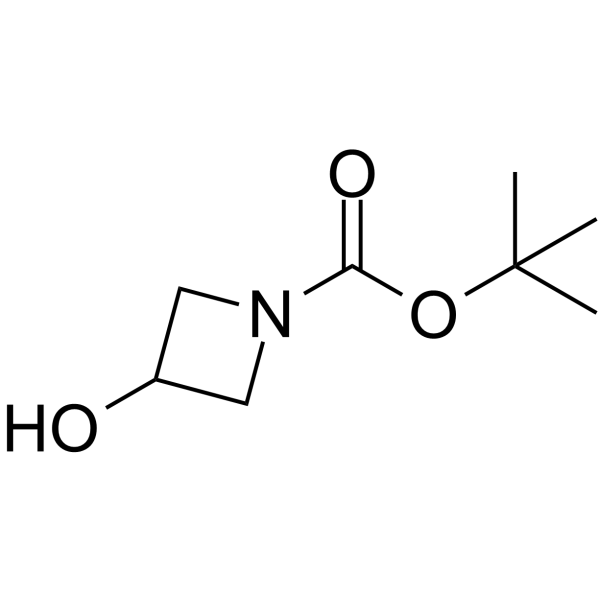
-
GC61687
1-Naphthalenemethanol
1-Naphthalenemethanol is a natural compound the root bark extracts of Annona senegalensis with antibacterial activity.
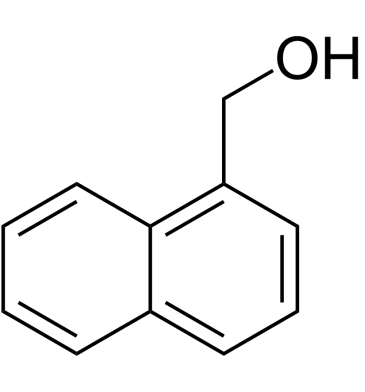
-
GC61652
1-Nonadecanol
1-Nonadecanol is one of the compositions of supercritical carbon dioxide (SC-CO2) essential oil of Heracleum thomsonii.
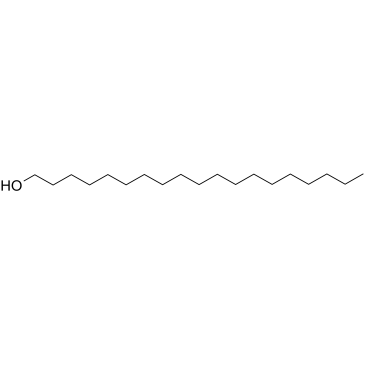
-
GC49818
1-Octen-3-ol
1-Octen-3-ol, a fatty acid fragrant, is a self-stimulating oxylipin messenger.

-
GC68501
1-Palmitoyl-2-oleoyl-sn-glycerol
1-Palmitoyl-2-oleoyl-sn-glycerol is an endogenous metabolite and a major diacylglycerol in hypoxia-inducible factor (HIF)-1.
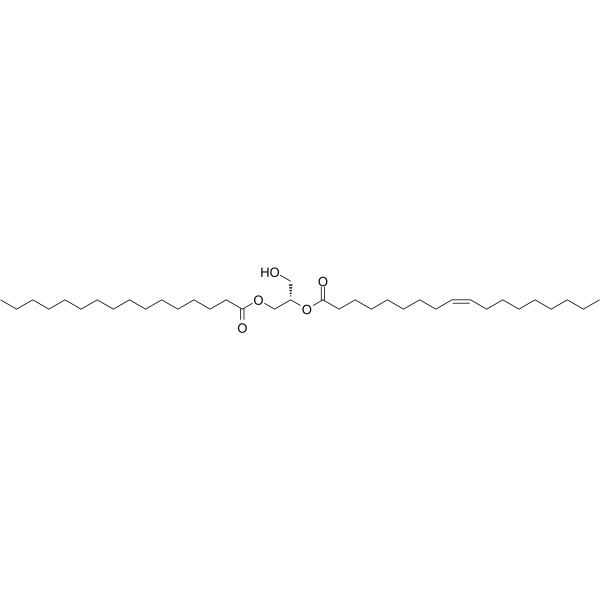
-
GC49071
1-Palmitoyl-d9 Lysophosphatidic Acid
An internal standard for the quantification of 1-palmitoyl lysophosphatidic acid

-
GC61645
1-Pentadecanol
1-Pentadecanol is a naturally occurring antiacne agent.
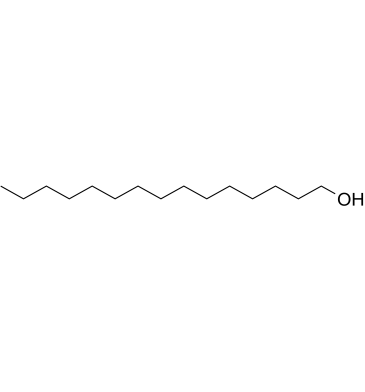
-
GC49366
1-Salicylate Glucuronide
A metabolite of salicylic acid and aspirin

-
GC49730
1-Stearoyl-2-15(S)-HETE-sn-glycero-3-PE-d11
An internal standard for the quantification of 1-stearoyl-2-15(S)-HETE-sn-glycero-3-PE

-
GC49088
1-Stearoyl-2-Adrenoyl-sn-glycero-3-PE
A phospholipid

-
GC49733
1-Stearoyl-2-eicosapentaenoyl-sn-glycero-3-PC
A phospholipid

-
GC68502
1-Stearoyl-2-linoleoyl-sn-glycero-3-phosphocholine
1-Stearoyl-2-linoleoyl-sn-glycero-3-phosphocholine can be chosen as a model volatile compound for studying the molecular species of oxidized phosphatidylcholines. This method was applied to actual food samples, namely soybean lecithin.
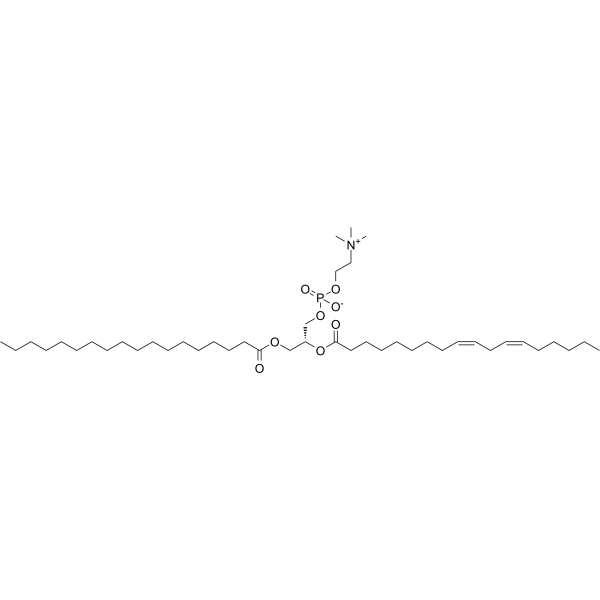
-
GC61641
1-Tetradecanol
1-Tetradecanol, isolated from Myristica fragrans, is a straight-chain saturated fatty alcohol.
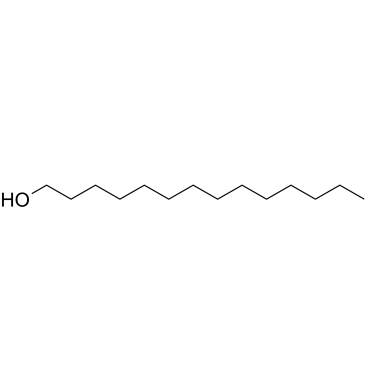
-
GC25003
1-[(4R,5R)-4,5-Dihydroxy-L-ornithine]echinocandin B hydrochloride (1:1)
1-[(4R,5R)-4,5-Dihydroxy-L-ornithine]-Echinocandin B Hydrochloride (Anidulafungin Nucleus) is used in the commercialization and late-stage development of a semisynthetic antifungal anidulafungin/D-fructose.
![1-[(4R,5R)-4,5-Dihydroxy-L-ornithine]echinocandin B hydrochloride (1:1) Chemical Structure 1-[(4R,5R)-4,5-Dihydroxy-L-ornithine]echinocandin B hydrochloride (1:1) Chemical Structure](/media/struct/default.png)
-
GC49820
10,11-dihydro-10,11-dihydroxy Carbamazepine
A metabolite of carbamazepine and oxcarbazepine

-
GC66057
10,11-Dihydrocarbamazepine
10,11-Dihydrocarbamazepine is the active metabolite of Oxcarbazepine. 10,11-Dihydrocarbamazepine also is an intermediate. Oxcarbazepine is rapidly and almost completely converted to 10,11-Dihydrocarbamazepine with probable Anticonvulsant efficacy.
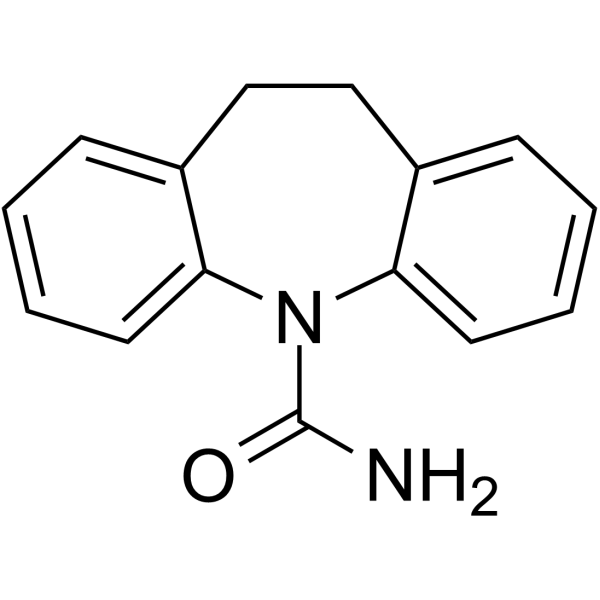
-
GC48782
10,13-epoxy-11-methyl-Octadecadienoic Acid
A furan fatty acid

-
GC49736
10-acetyl Docetaxel
10-acetyl Docetaxel (10-Acetyl docetaxel) is an analog of Docetaxel, with anticancer activity. Docetaxel is a microtubule disassembly inhibitor, with antimitotic activity.

-
GC12954
10-DAB (10-Deacetylbaccatin)
An inhibitor of microtubule assembly
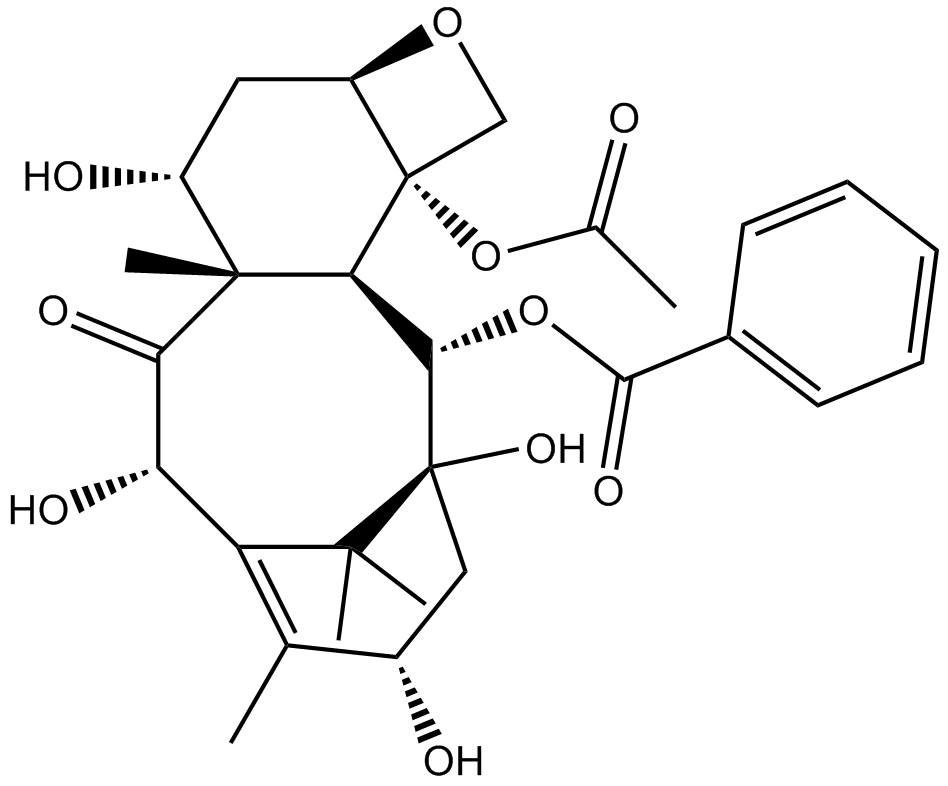
-
GC64726
10-Formyl-5,8-dideazafolic acid
10-Formyl-5,8-dideazafolic acid is a thymidylate synthase inhibitor.

-
GC49872
10-Formyltetrahydrofolate (sodium salt) (technical grade)
10-Formyltetrahydrofolate (sodium salt) (technical grade) is a form of tetrahydrofolic acid that acts as a donor of formyl groups in anabolism.

-
GC49118
10-hydroxy Warfarin
A metabolite of (R)-warfarin

-
GC52026
10-oxo-12(Z),15(Z)-Octadecadienoic Acid
An oxylipin gut microbiota metabolite

-
GC52071
10-oxo-12(Z)-Octadecenoic Acid
A metabolite of linoleic acid and an activator of TRPV1

-
GC52398
10-oxo-12(Z)-Octadecenoic Acid ethyl ester
An ester form of 10-oxo-12(Z)-octadecenoic acid

-
GC52428
10-oxo-12(Z)-Octadecenoic Acid-d5
An internal standard for the quantification of 10-oxo-12(Z)-octadecenoic acid

-
GC63576
10074-A4
10074-A4 is a c-Myc inhibitor. 10074-A4 could bind to c-Myc370-409 at different sites along the peptide chain. 10074-A4 has anticancer effects.
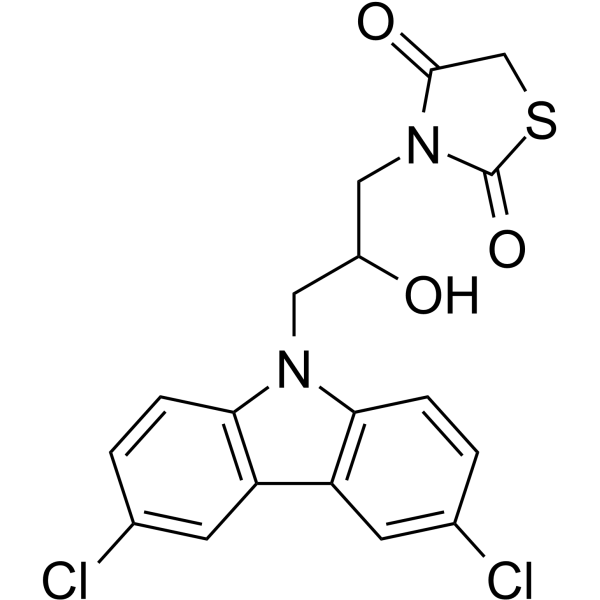
-
GC13863
10Panx
A peptide inhibitor of PANX1
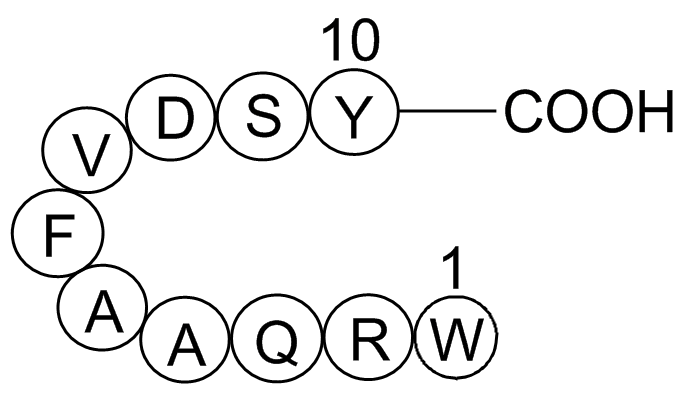
-
GC52423
10Panx (trifluoroacetate salt)
A peptide inhibitor of PANX1

-
GC48787
11β-Hydroxyetiocholanolone
A metabolite of hydrocortisone

-
GC68204
11-Azidoundecanoic acid
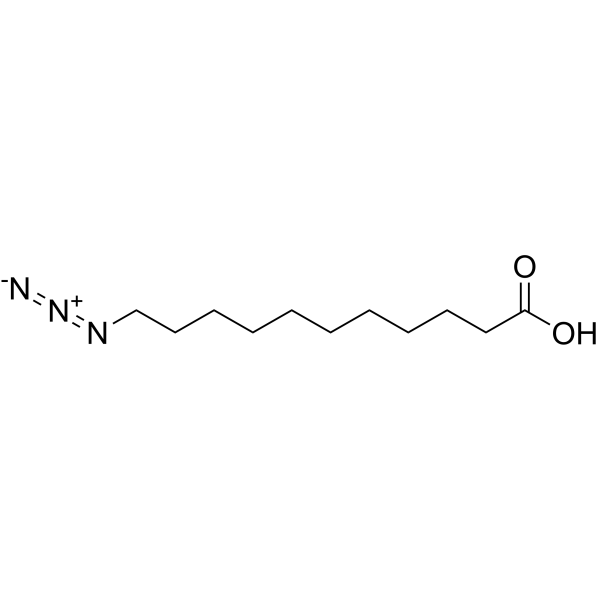
-
GC48821
11-cis Retinol
An isomer of vitamin A

-
GC48710
11-Dehydrocorticosterone
An endogenous mineralocorticoid

-
GC66224
11-Maleimidoundecanoic acid
11-Maleimidoundecanoic acid is an alkyl chain-based PROTAC linker that can be used in the synthesis of PROTACs.
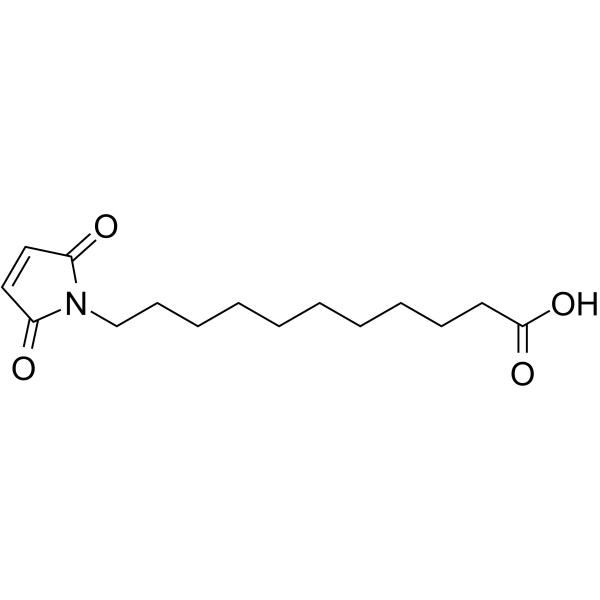
-
GC61538
11-Oxo etiocholanolone
11-Oxo etiocholanolone (11-Ketoetiocholanolone) is a metabolite of Etiocholanolone.
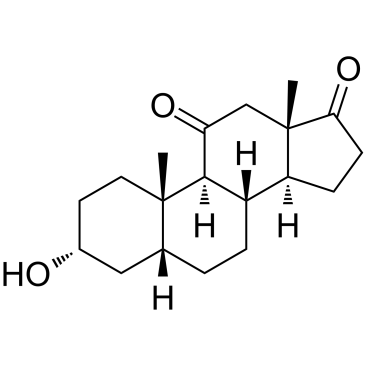
-
GC52343
113-O12B
An ionizable cationic lipidoid

-
GC63796
116-9e
116-9e (MAL2-11B) is a Hsp70 co-chaperone DNAJA1 inhibitor.
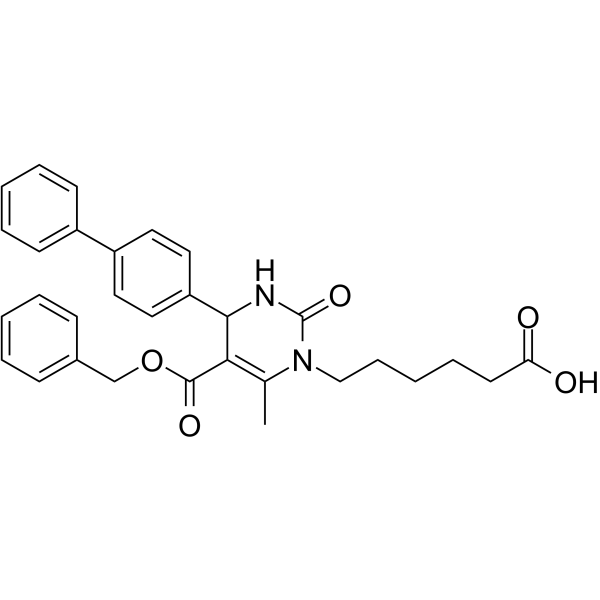
-
GC49310
12-hydroxy Stearic Acid
A hydroxy fatty acid

-
GC49808
12-methyl Tridecanoic Acid
A methylated fatty acid

-
GC64008
12-O-Methylcarnosic acid
12-O-Methylcarnosic acid (12-Methoxycarnosic acid), a diterpene carnosic acid isolated from the acetone extract of Salvia microphylla, is an active constituent of 5α-reductase inhibition with an IC50 value of 61.7 μM.
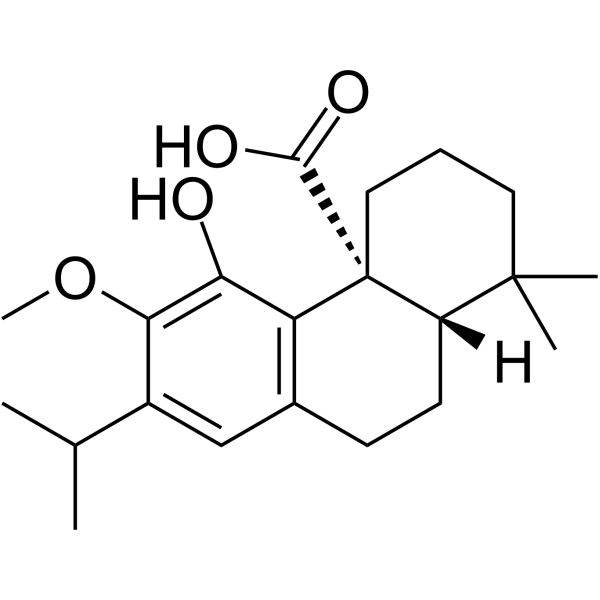
-
GN10444
12-O-tetradecanoyl phorbol-13-acetate
A PKC activator
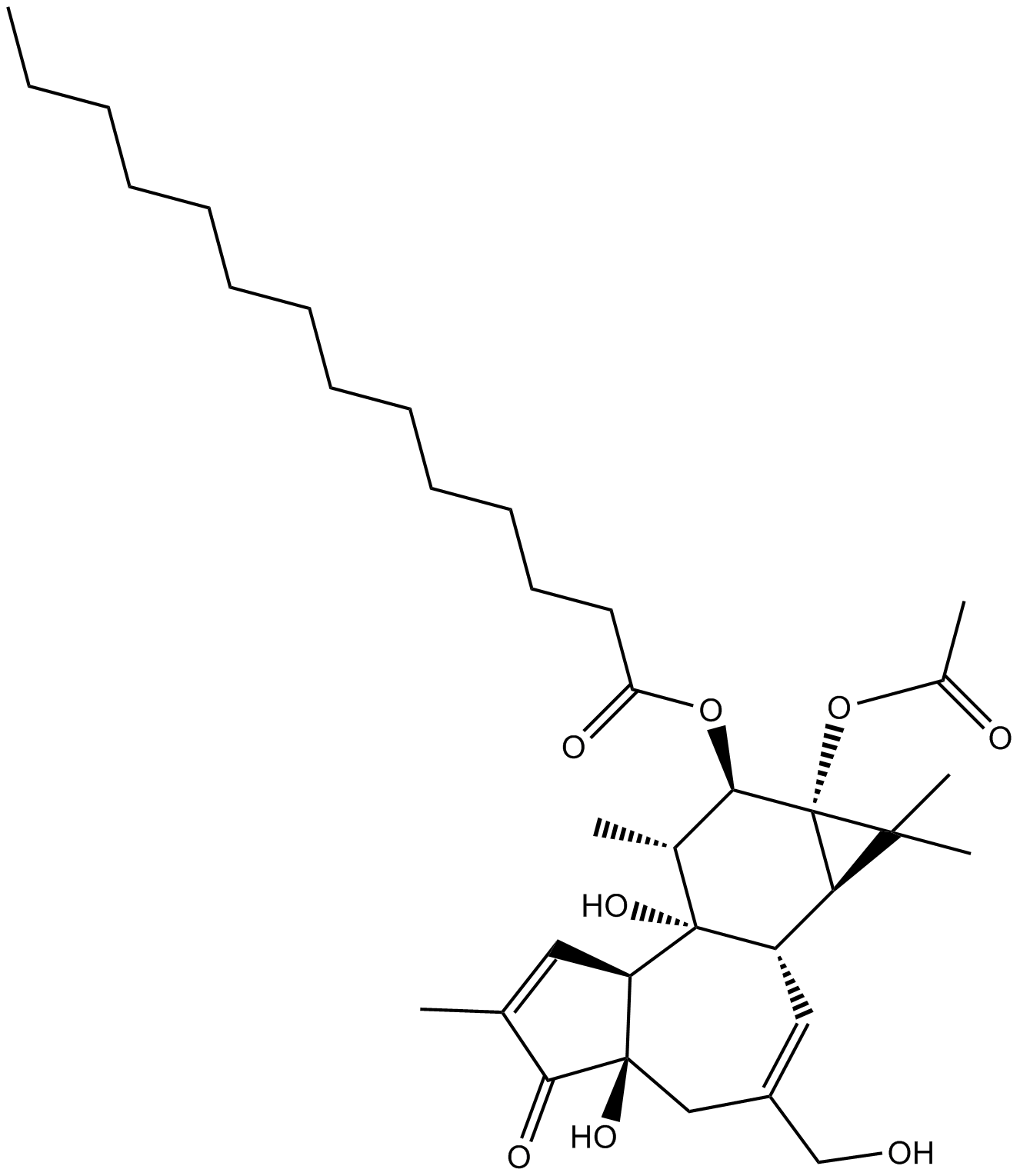
-
GC52133
12-Tridecenoic Acid

-
GC62725
13,21-Dihydroeurycomanone
13,21-Dihydroeurycomanone, a natural compound isolated from Eurycoma longifolia root, possesses anti-parasite activity for Plasmodium falciparum and Toxoplasma gondii.
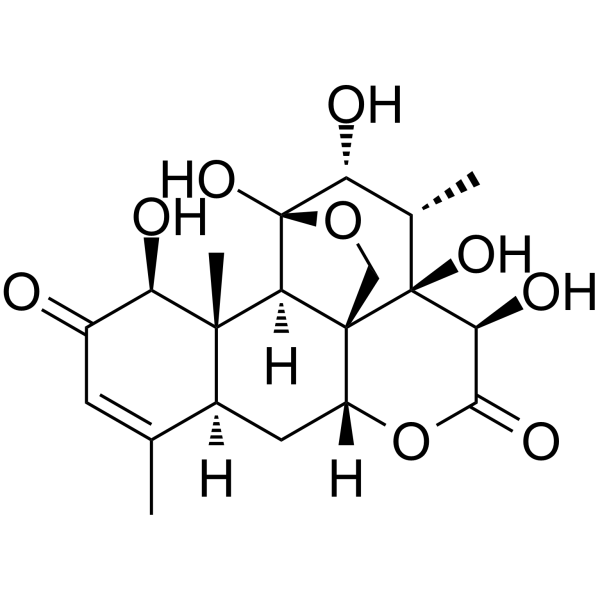
-
GC62758
13-cis-Vitamin A palmitate
13-cis-Vitamin A palmitate (13-cis-Retinyl palmitate) is a 13-cis isomer formed by vitamin A palmitate in corn flakes.
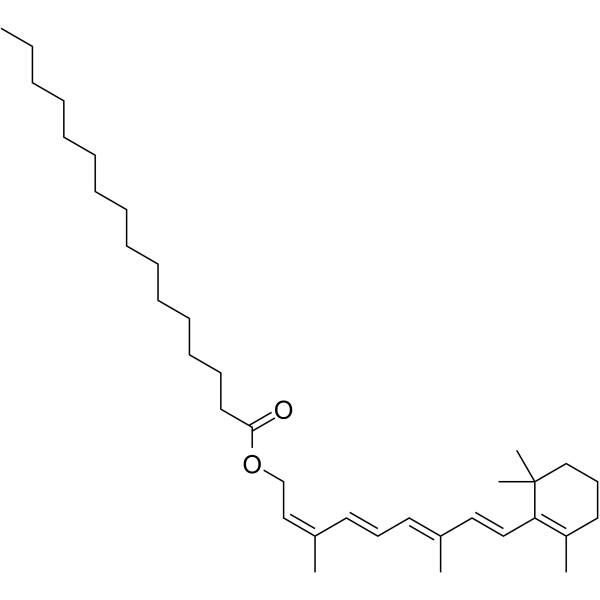
-
GC49759
13C17-Mycophenolic Acid
An internal standard for the quantification of mycophenolic acid

-
GC49912
13C20,15N10-Cyclic di-GMP (sodium salt)
An internal standard for the quantification of cyclic di-GMP

-
GC49390
13C6-4-Nitroaniline
An internal standard for the quantification of 4-nitroaniline

-
GC49894
15(S)-HETE-d8 ethyl ester
An internal standard for the quantification of 15(S)-HETE ethyl ester

-
GC49036
15-(6-nitroxyhexanoyl)-17-phenyl trinor Prostaglandin F2α
A nitric oxide-donating derivative of 17-phenyl trinor prostaglandin F2α

-
GC68488
15-Azido-pentadecanoic acid
15-Azido-pentadecanoic acid is a chemical reagent containing an azide group. Azido Palmitic Acid can be used to identify and characterize post-translational palmitoylated proteins using a simple and robust two-step labeling and detection technique.
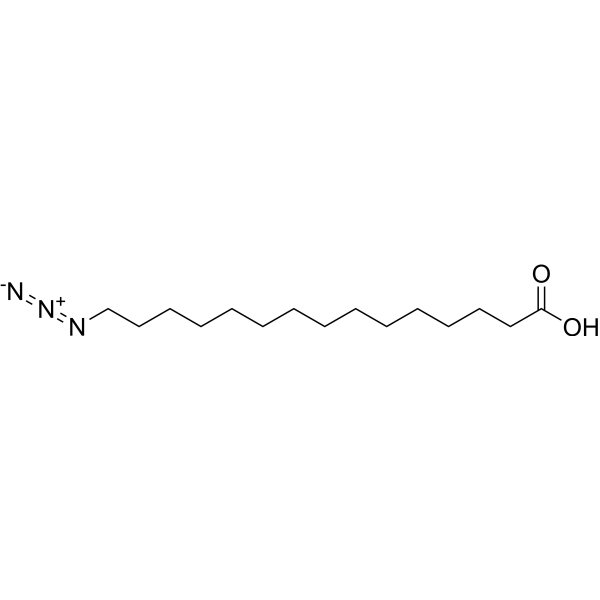
-
GC49161
16α-hydroxy Dehydroepiandrosterone
A metabolite of dehydroepiandrosterone

-
GC65988
16-Azidohexadecanoic acid
16-Azidohexadecanoic acid, a synthetic fatty acid, can be used as a modification marker for nucleotides and a molecular probe for fatty acid metabolism.
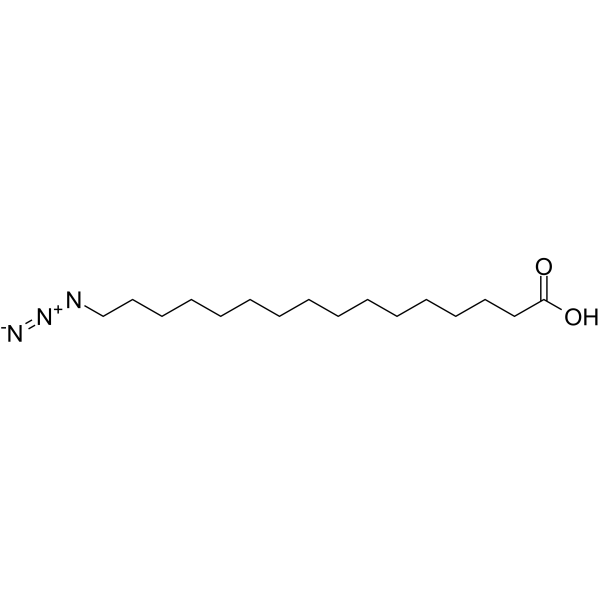
-
GC49068
16-Epiestriol
A metabolite of estrone

-
GC61740
16-Keto Aspergillimide
16-Keto Aspergillimide (SB202327) is an anthelmintic agent isolated from Aspergillus strain IMI 337664.
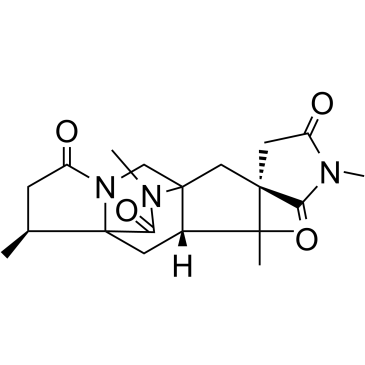
-
GC49848
16-Ketoestradiol
An active metabolite of estrone

-
GC17557
17 alpha-propionate
A peripherally selective androgen receptor antagonist
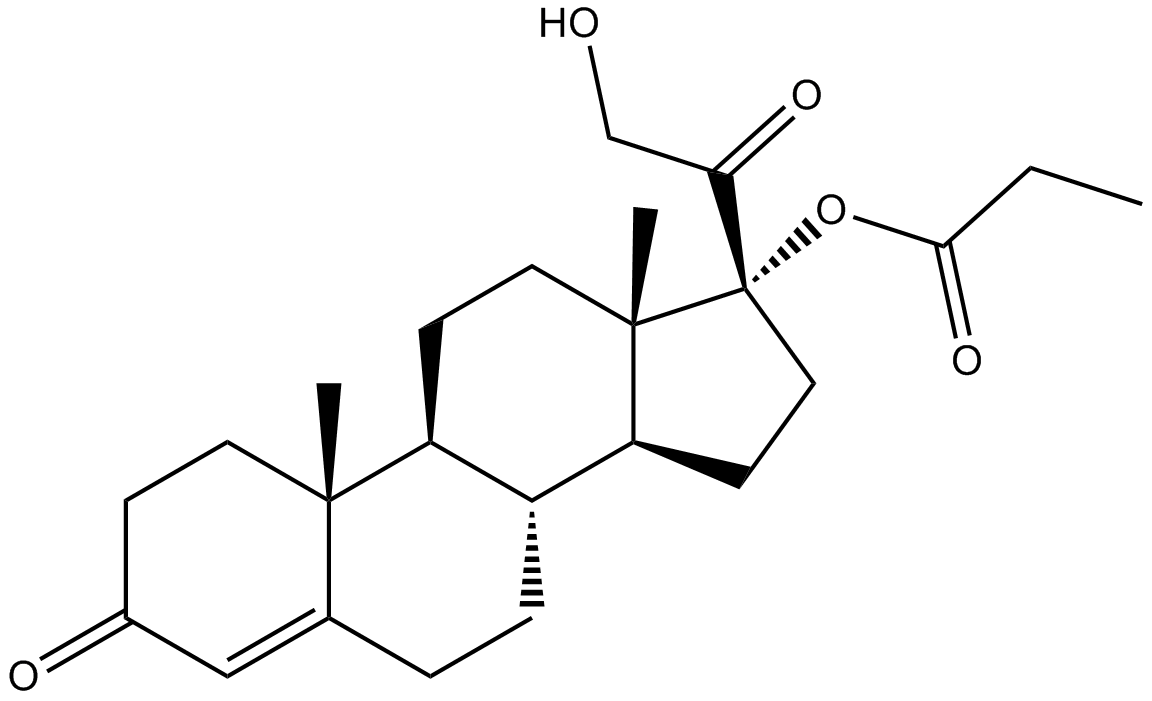
-
GC68493
17α-Hydroxyprogesterone-d8
17α-Hydroxyprogesterone-d8 is the deuterated form of 17α-Hydroxyprogesterone. 17α-Hydroxyprogesterone (17-OHP) is an endogenous progestogen that serves as a chemical intermediate in the biosynthesis of other steroid hormones, including glucocorticoids, androgens, and estrogens.
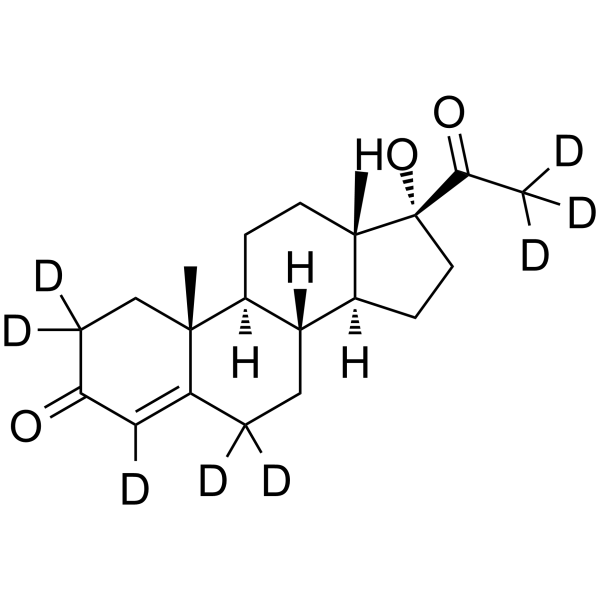
-
GC65870
17β-Estradiol-3-β-D-glucuronide-d3 sodium
17β-Estradiol-3-β-D-glucuronide-d3 sodium is the deuterium labeled 17β-Estradiol-3-β-D-glucuronide.
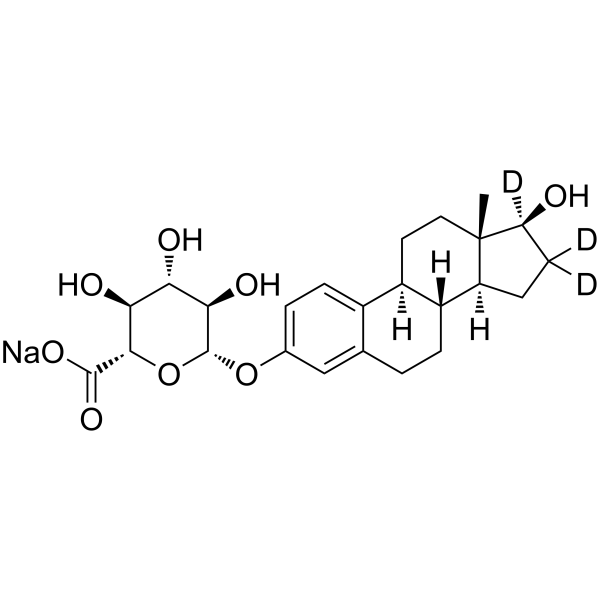
-
GC68494
17β-HSD1-IN-1
17β-HSD1-IN-1 (Compound 1) is a highly selective inhibitor of 17β-HSD1, with IC50 values of 5.6 and 3155 nM for inhibition of 17β-HSD1 and 17β-HSD2, respectively. It can be used for research on non-small cell lung cancer (NSCLC).
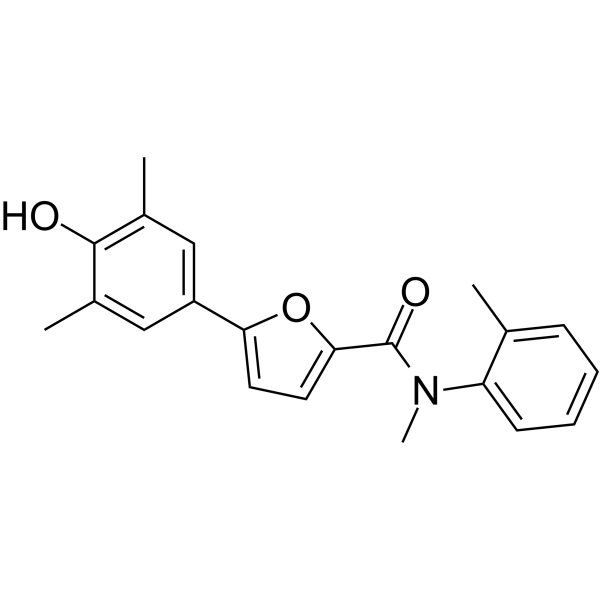
-
GC49178
17(R)-Protectin D1
An aspirin-triggered epimer of protectin D1

-
GC49356
17(S)-HDoTE
A metabolite of adrenic acid

-
GC61823
17,17-(Ethylenedioxy)androst-4-en-3-one
17,17-(Ethylenedioxy)androst-4-en-3-one (4-?androstene-?3,?17-?dione-?17-?cyclic ethylene ketal) is an effective ingredient in cosmetics, which can be used for acne and promote hair growth research.
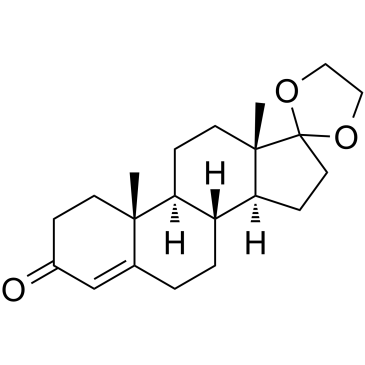
-
GC11720
17-AAG (KOS953)
An inhibitor of Hsp90
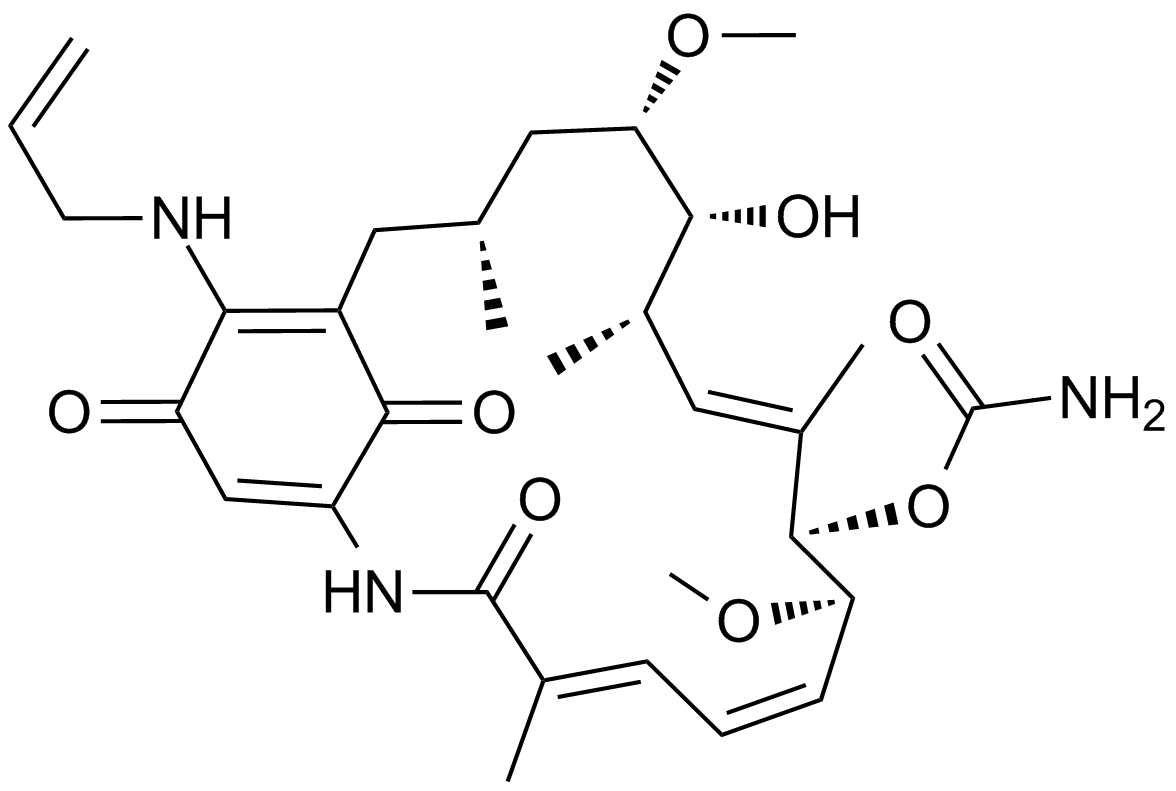
-
GC17210
17-AAG Hydrochloride
Hsp90 inhibitor,geldanamycin analogue
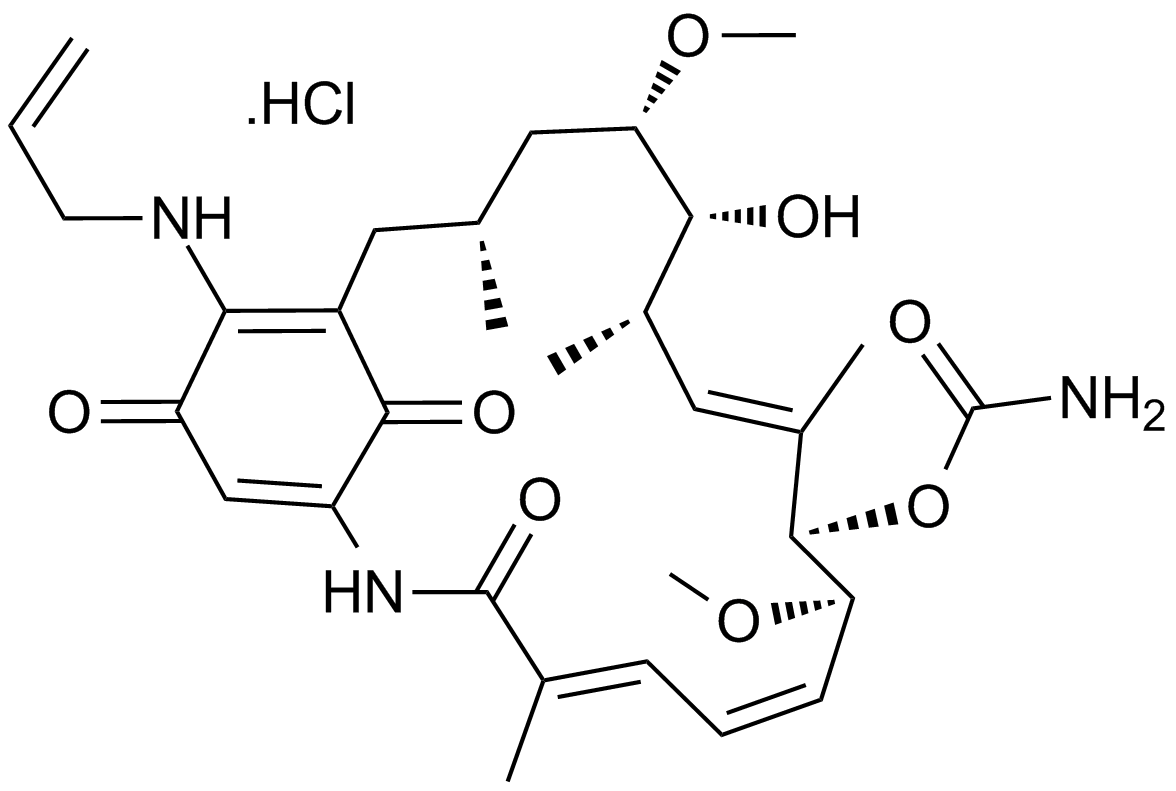
-
GC48819
17-Epiestriol
A metabolite of estrone

-
GC68426
17a-Hydroxypregnenolone-d3
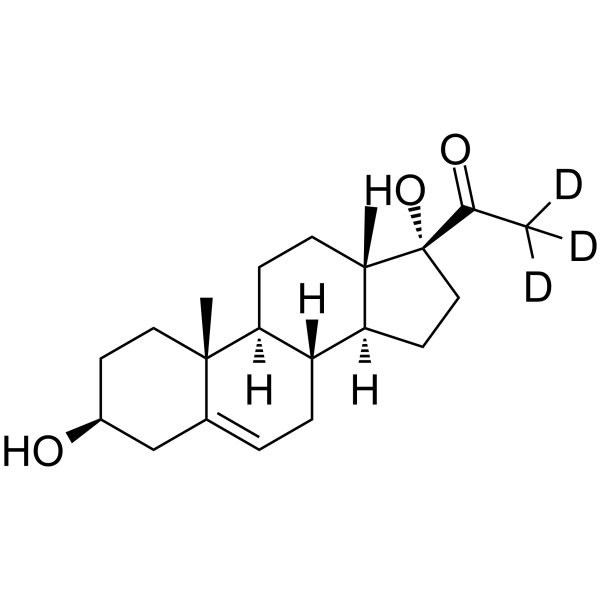
-
GC62759
18-Oxocortisol
18-Oxocortisol is a derivative of cortisol that is produced by aldosterone synthase (CYP11B2).
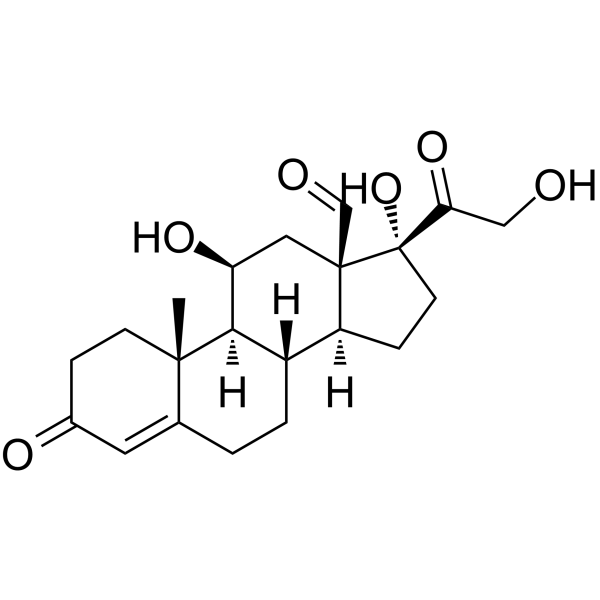
-
GC49651
19-alkyne Cholesterol
An alkyne derivative of cholesterol for click chemistry

-
GC63603
19-Hydroxyandrost-4-ene-3,17-dione
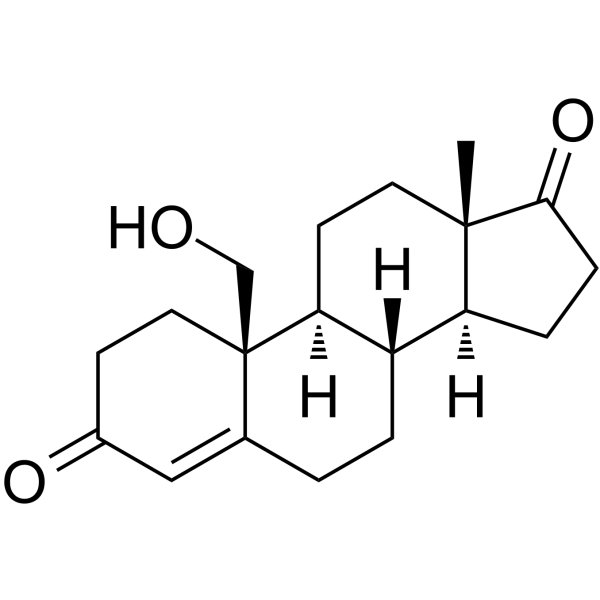
-
GC15623
1alpha, 25-Dihydroxy VD2-D6
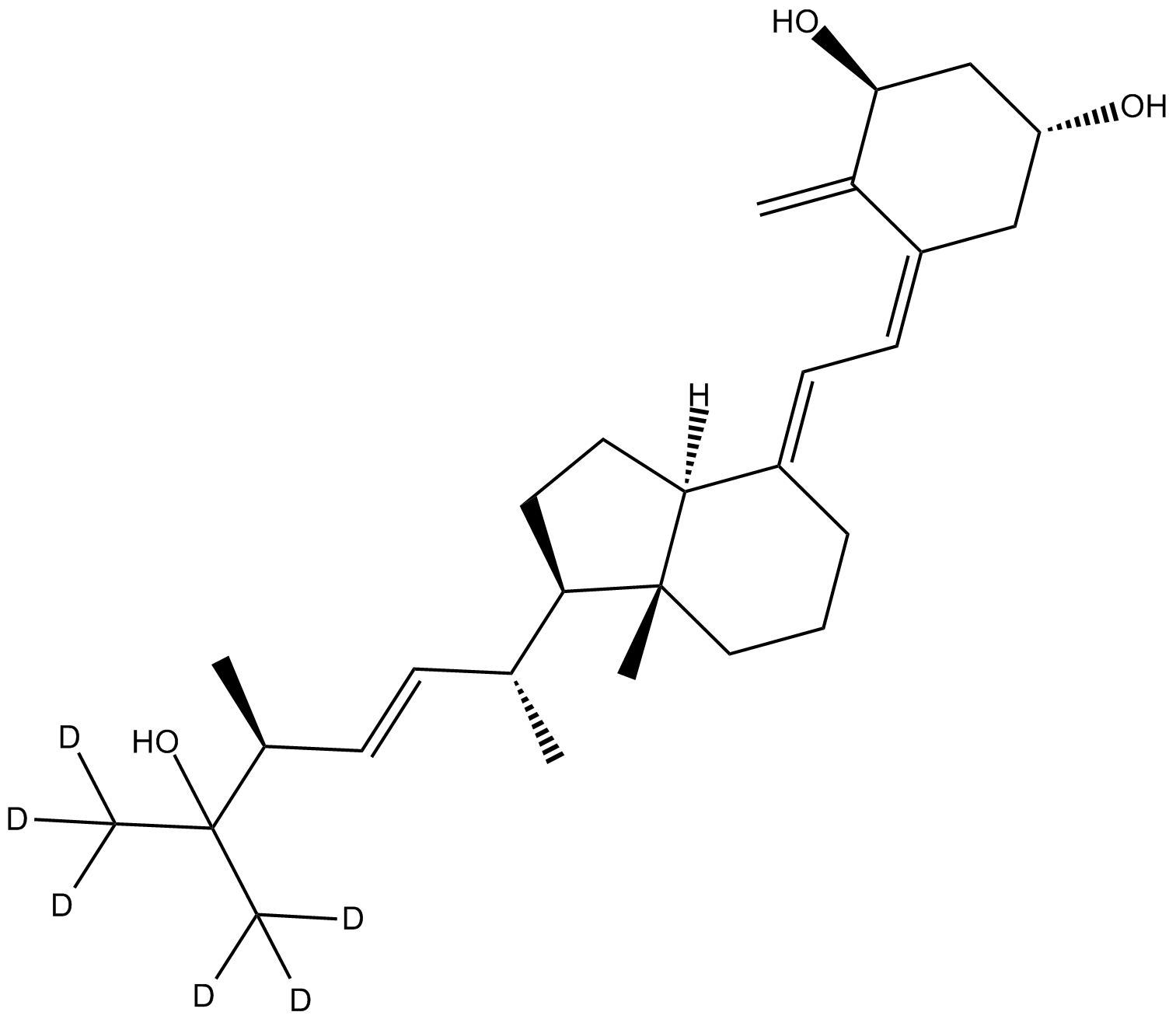
-
GC52216
1H,1H,2H,2H-Perfluorooctanesulfonic Acid
A polyfluoroalkyl substance

-
GA11081
2 CTC
2 CTC
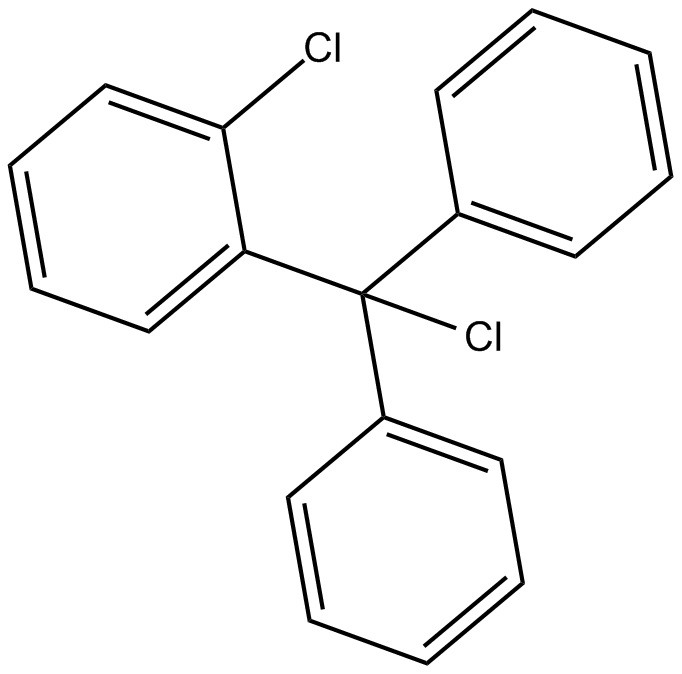
-
GC66890
2',3'-Dideoxy-5-iodocytidine
2',3'-Dideoxy-5-iodocytidine is used for gene sequencing can be used as an antibiotic. 2',3'-Dideoxy-5-iodocytidine is particular effective against Mycobacterium.
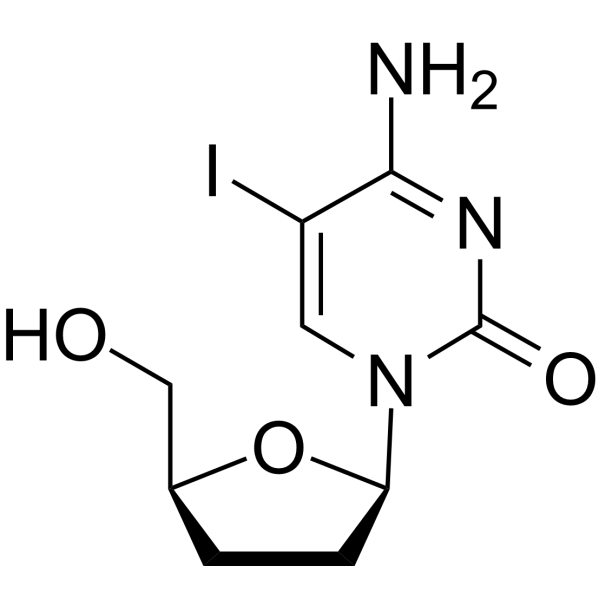
-
GC52501
2',3'-Dideoxyadenosine 5'-triphosphate (lithium salt)
An inhibitor of reverse transcriptases and DNA polymerases

-
GC67628
2',7'-Dichlorofluorescein
2',7'-Dichlorofluorescein acts as a fluorescent probe (Ex=496 nm and Em=525 nm) for reactive oxygen species (ROS) measurement.
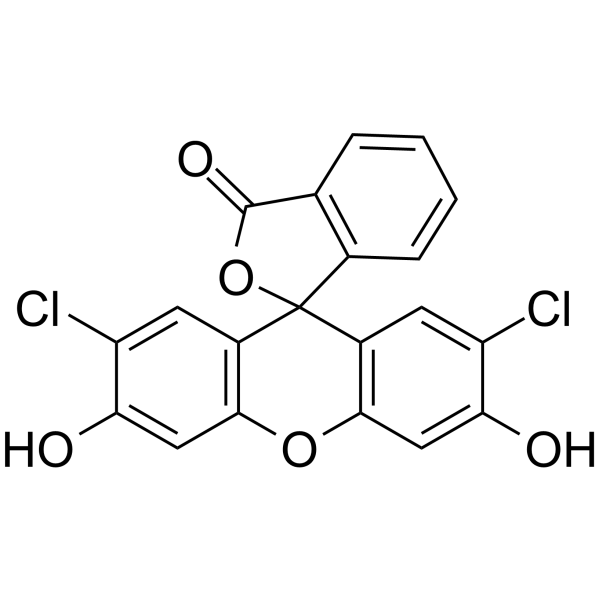
-
GC67627
2'-Deoxy-5'-O-DMT-2'-fluorouridine
2'-Deoxy-5'-O-DMT-2'-fluorouridine, a nucleoside analogue, is a 5'-O-DMTr-5-FUDR derivative with potent anti-yellow fever (YFV) activity.
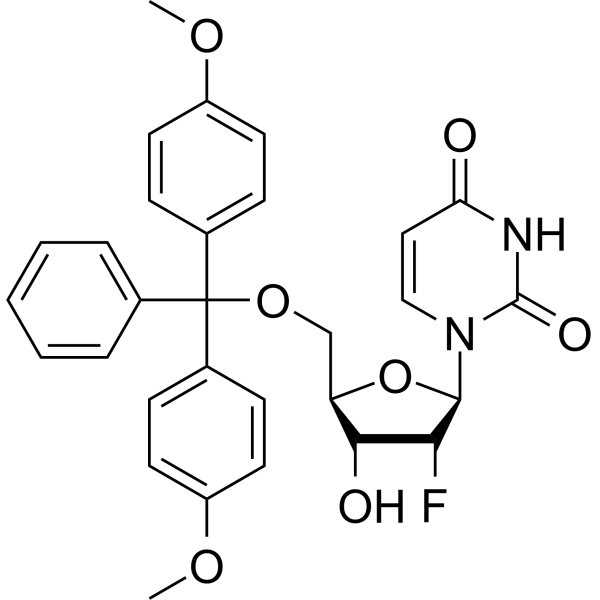
-
GC67328
2'-Deoxy-L-adenosine
2'-Deoxy-L-adenosine is an orally active synthon for modified oligodeoxyribonucleotides. 2'-Deoxy-L-adenosine is a potent, specific and selective inhibitor of the replication of hepatitis B virus (HBV) as well as the closely related duck and woodchuck hepatitis viruses (WHV).
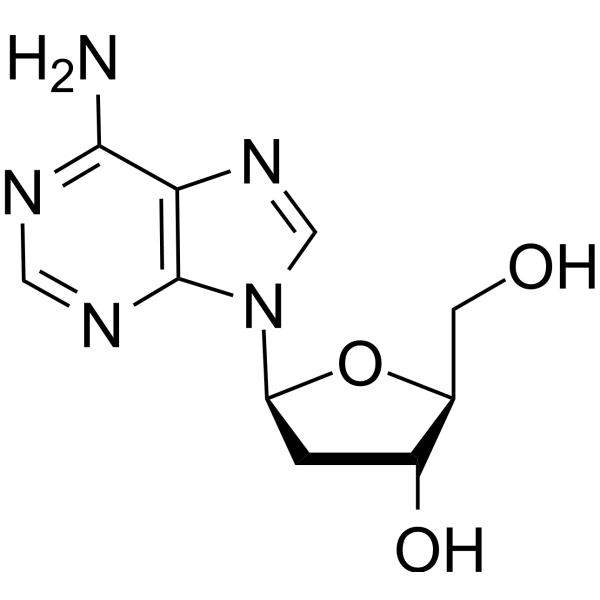
-
GC65489
2'-F-Bz-dC Phosphoramidite
2'-F-Bz-dC Phosphoramidite can be used in the synthesis of oligoribonucleotides.
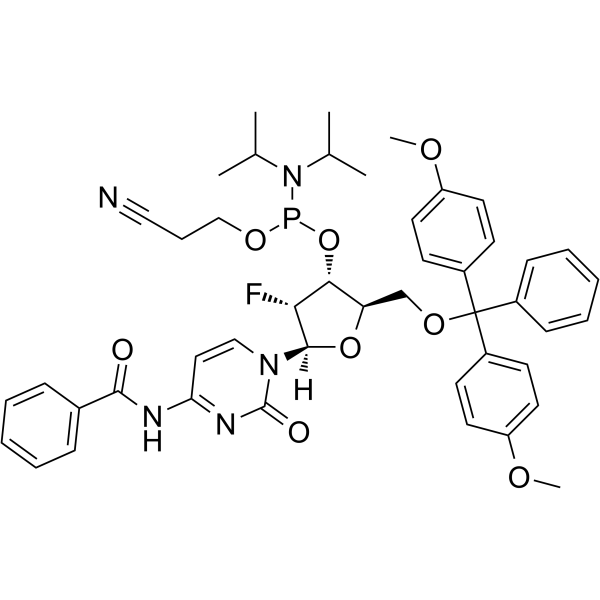
-
GC25010
2'-Hydroxy-2-methoxychalcone
2'-Hydroxy-2-methoxychalcone is a chemical.
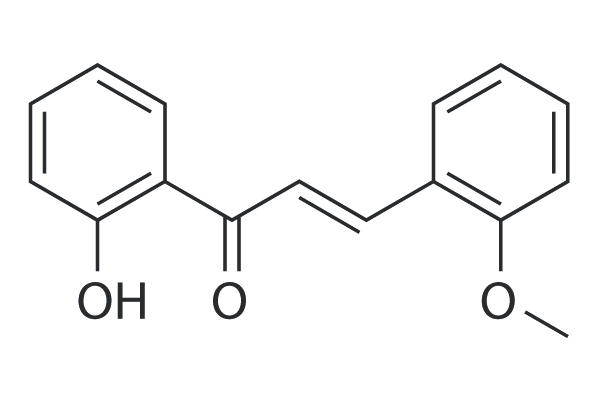
-
GC66651
2'-O,4'-C-Methyleneadenosine
2'-O,4'-C-Methyleneadenosine (LNA-A) is a locked nucleic acid (LNA) and is also an adenosine analog.
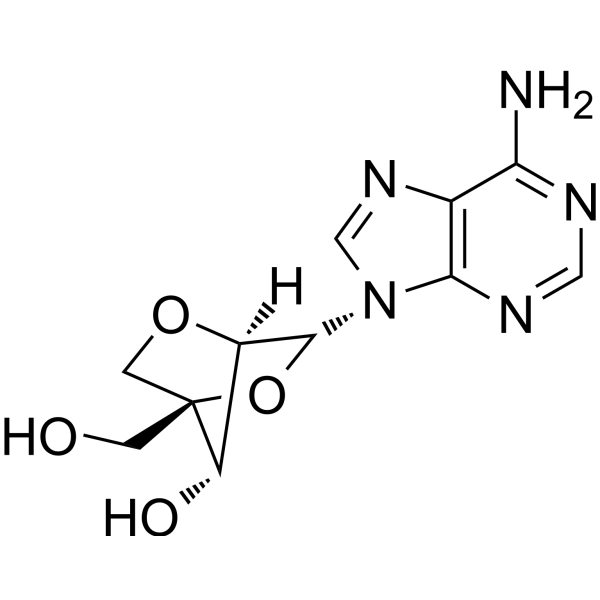
-
GC66654
2'-O,4'-C-Methylenecytidine
2'-O,4'-C-Methylenecytidine (LNA-C(Bz)) is a bicyclic nucleoside analogue with fixed N-type conformation. 2'-O,4'-C-Methylenecytidine can be used to synthesize oligonucleotides. 2'-O,4'-C-Methylenecytidine forms duplexes with complementary DNA and RNA strands.
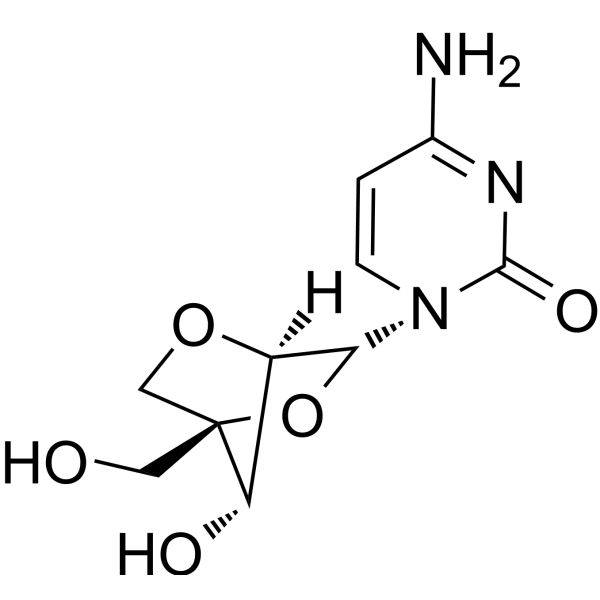
-
GC66655
2'-O,4'-C-Methyleneguanosine
2′-O,4′-C-Methyleneguanosine (LNA-G) is a reverse guanine analogue, where LNA (locked nucleic acid) is a nucleic acid analogue. LNA modification can be used in a variety of applications such as effective binding affinity to complementary sequences and greater nuclease resistance than natural nucleotides, offering great potential for applications in disease diagnosis and research. LNA-G is also available via KOD DNA polymerase, which allows the integration of LNA-G nucleotides into the DNA strand.

-
GC68521
2'-O-MB-cAMP sodium
2'-O-MB-cAMP (2'-O-Monobutyryl cyclic AM) sodium is an active precursor of Cyclic AMP.
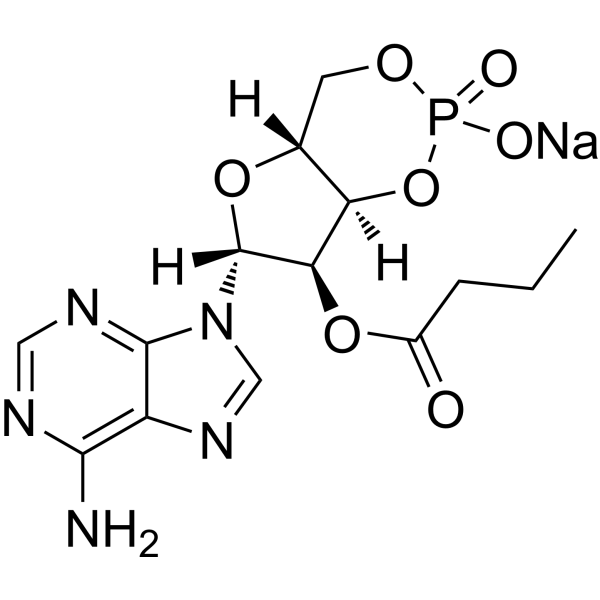
-
GC52183
2'-O-Methyl-5-methyluridine

-
GC66713
2'-O-MOE-5-Me-C(Bz)
2'-O-MOE-5-Me-C (Bz) is a nucleotide for the stereoselective synthesis of nucleoside alkyl phosphonates.
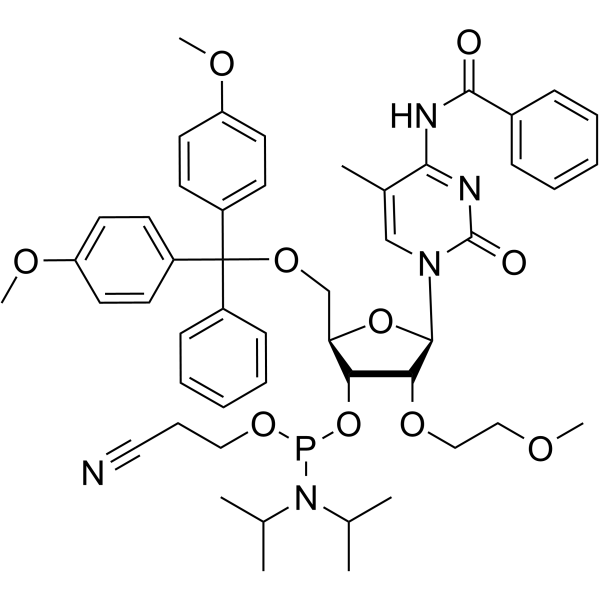
-
GC66657
2'-O-MOE-5-Me-rC
2'-O-MOE-5-Me-rC is an active compound. 2'-O-MOE-5-Me-rC can be used for oligonucleotide synthesis.

-
GC66091
2'-O-MOE-5-Me-rU
2'-O-MOE-5-Me-rU is an active compound. 2'-O-MOE-5-Me-rU can be used for oligonucleotide synthesis.
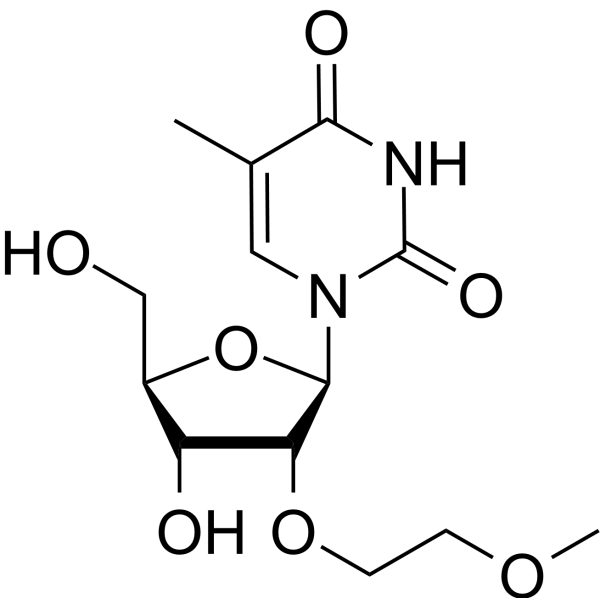
-
GC66656
2'-O-MOE-rC
2'-O-MOE-rC is a 2'-O-MOE modified nucleoside. 2'-O-MOE-rC can be used for synthesis of DNA.
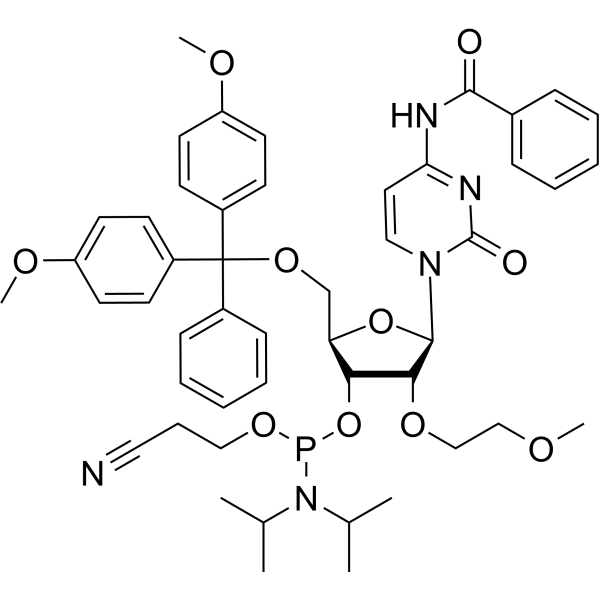
-
GC66652
2'-O-MOE-U
2'-O-MOE-U is a phosphoramidite, can be used for oligonucleotide synthesis.

-
GC65170
2′,3′-Di-O-acetylguanosine
2′,3′-Di-O-acetylguanosine is a nucleoside analog.
